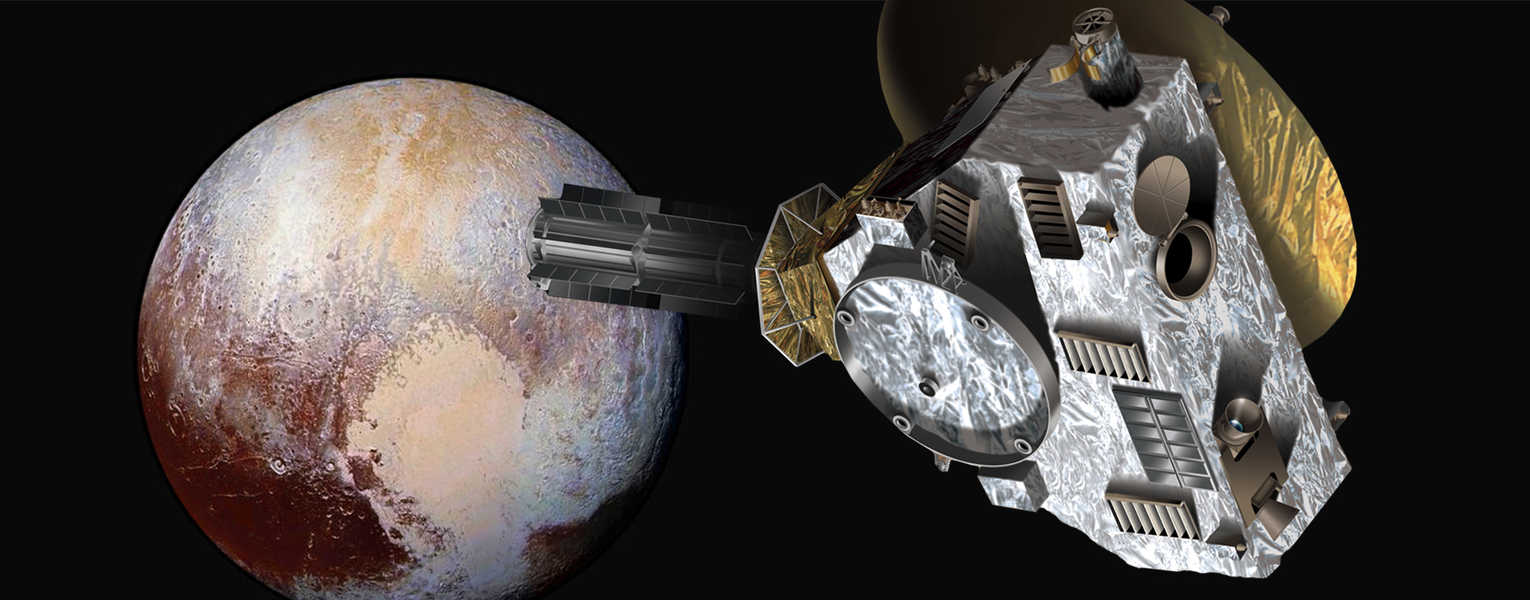The Science Operations Center (SOC), which complements the innovative research at Southwest Research Institute (SwRI)-Boulder, supports a growing number of robotic missions. The SOC performs three main tasks:
- Designing the commands that control the capture of images and data by spacecraft
- Automated processing of data returned to Earth
- Archiving data for generations to come
New Horizons Mission
New Horizons is the first mission in NASA’s New Frontiers program, managed by the agency’s Marshall Space Flight Center in Huntsville, Ala. SwRI leads the science mission, payload operations, and encounter science planning. The Johns Hopkins University Applied Physics Laboratory designed, built, and operates the New Horizons spacecraft and manages the mission under Principal Investigator Dr. Alan Stern’s direction for NASA’s Science Mission Directorate. The NASA Heliophysics program also supported the analysis of these observations.
SwRI’s Space Operations Center (SOC) acts partly as an interface between the science team (where specific mission observations are carefully selected) and the Mission Operations Center at the Johns Hopkins University Applied Physics Laboratory in Laurel, Md., which sends commands to the spacecraft. New Horizons flew by Pluto on July 14, 2015, coming within 7,800 miles (12,500 kilometers) of Pluto’s surface. Onboard instruments collected historic images and science data on Pluto and all five of its moons, revolutionizing knowledge about the entire Pluto system.
Since then, NASA has approved a mission extension enabling the spacecraft to travel nearly two billion miles beyond Pluto into the Kuiper Belt, an ancient area of icy bodies and small planets at the far reaches of the solar system. This new mission will study the Kuiper Belt environment and more than two dozen Kuiper Belt objects, and will make a close flyby of one Kuiper Belt object known as 2014 MU69 on Jan. 1, 2019.
UV Spectrometers
Three UV spectrometers on active missions are supported at the SOC.
- The ALICE instruments onboard New Horizons and Rosetta will examine the surfaces and tenuous atmospheres of Pluto and the comet Churyumov-Gerasimenko, respectively.
- The LAMP instrument, currently orbiting the Moon on the Lunar Reconnaissance Orbiter, seeks to peer into permanent shadows near the poles and identify frosts.
- The SOC also performs data processing for the Mars Reconnaissance Orbiter’s SHARAD instrument
SOC scientists and engineers are also designing data pipelines for RAISE and SHAZAM. Science operations for MSL’s Radiation Assessment Detector will be executed at the SOC. The growing experience base makes the SOC a valuable resource for future spaceflight projects.

